In the quiet backstreets of Damascus’ Old City, behind a restored wooden door and through a leafy courtyard, something remarkable is happening. Inside a centuries-old Jewish house — once in ruins — now hums the sound of Syria’s last working handloom for Damascene brocade. It’s the only one of its kind still operating in the entire country.
This is not just a story about a fabric. It’s a story about revival, resilience, and the passionate people behind the Al Sakhra (The Rock) Association, who refused to let this ancient Damascene art disappear.
What is Damascene Brocade?
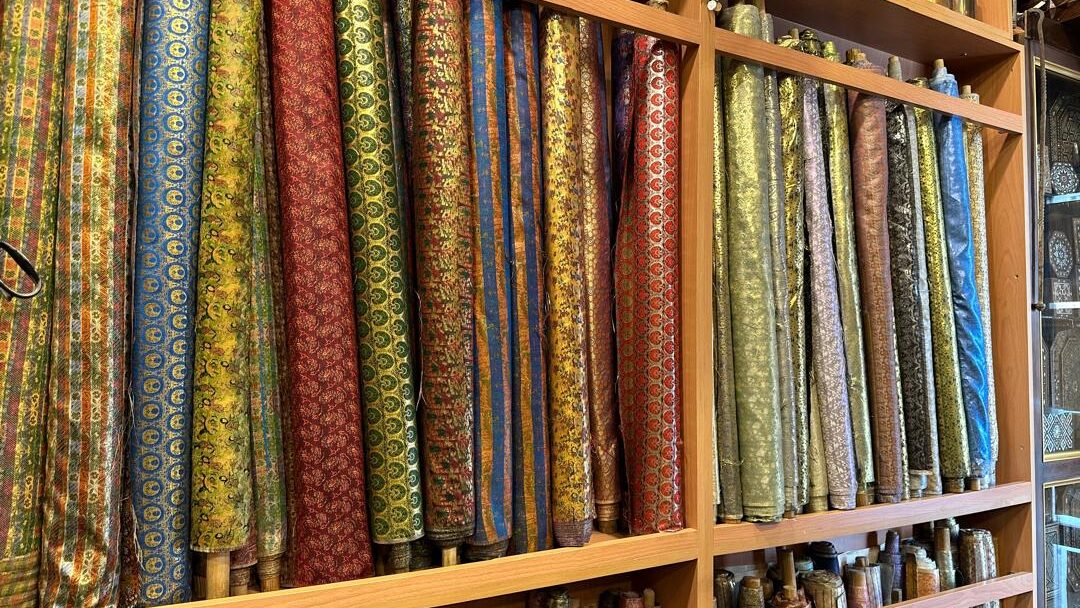
Let’s break it down simply: brocade is a luxurious silk fabric woven with gold or silver threads. It’s rich, heavy, and beautifully detailed — traditionally used for royal garments, upholstery, or high-end decor. Damascus has been famous for this craft for more than 1,200 years (and some say even 3,000), with roots tracing back to the Silk Road, when silk threads came all the way from China.
In Arabic, brocade was once known as “dibaj”, worn by kings, sultans, and even gifted to foreign royalty — including Queen Elizabeth II, who received a Damascene brocade dress as a wedding gift in 1947.
Why is Brocade Disappearing?
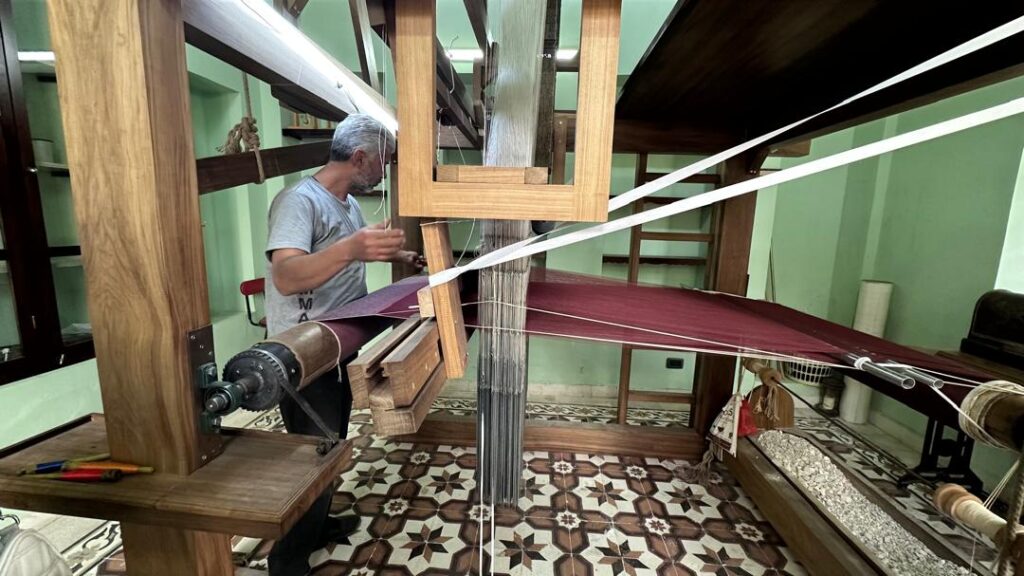
Unfortunately, this ancient craft is on the brink of extinction. There are only one or two handlooms left in Syria, and the number of skilled weavers has dropped drastically.
Here’s why:
- The war damaged workshops and displaced artisans.
- Natural silk production has stopped. The silk factory in Dreikish, Tartous — once a major source of local silk — is no longer active.
- Materials are expensive. Without local silk, Syria depends on imported threads.
- Prices are too high for locals to buy. A single meter of genuine brocade today can cost between 600,000–700,000 SYP (~50–60 USD), making it a luxury in a time of economic hardship.
- Cheaper synthetic alternatives have taken over the market, further reducing demand for the handmade kind.
A Damascus textile shop owner puts it clearly:
“This is the face of our country. It’s a shame to lose it.”
Al Sakhra: The Women Saving the Loom
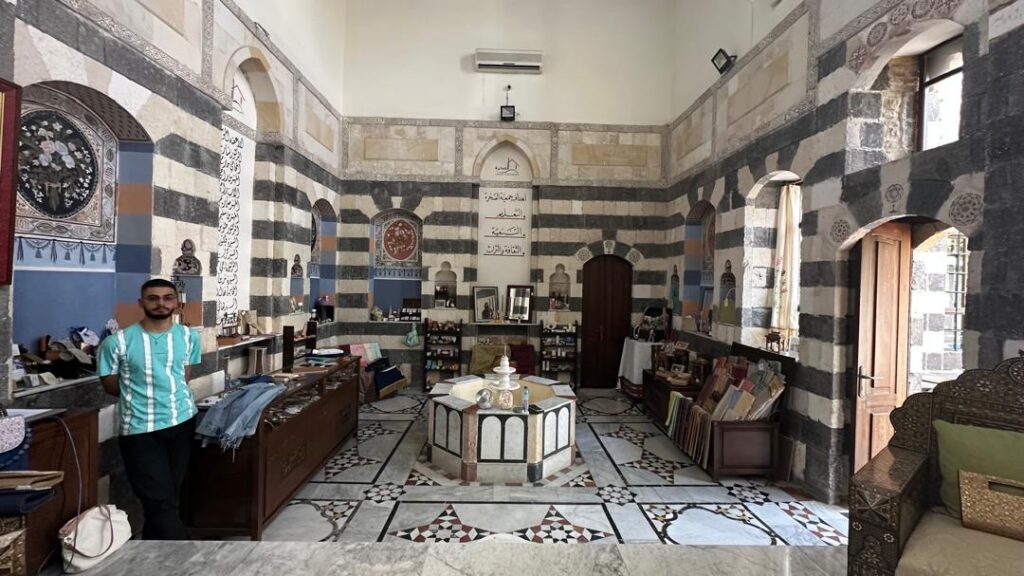
That’s where Al Sakhra (The Rock) Association steps in.
Founded by a group of Syrian women, this nonprofit isn’t just about saving heritage — it’s about creating jobs, empowering locals, and keeping culture alive.
The name “Al Sakhra” comes from the Biblical phrase: “On this rock I will build my church.” For these women, the rock symbolizes hope, strength, and rebuilding Syria from the roots.
They took a destroyed Jewish house in the Old City — abandoned for decades — and lovingly restored it using traditional methods. Today, that house is more than just walls and tiles. It’s a living museum, workshop, and community hub — home to the only active traditional brocade loom in the country.
Weaving a Future from the Past
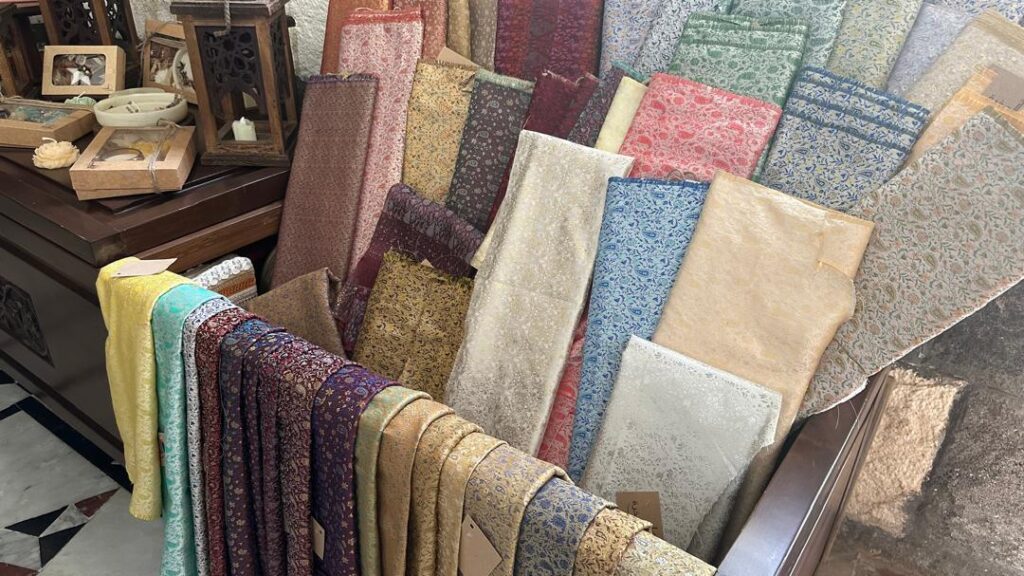
Inside this house, you can meet Mohammad Al-Shamaa, a master weaver with over 30 years of experience. He works on the restored wooden loom — guiding silk threads into intricate patterns, just as generations before him once did.
The most popular designs woven here are inspired by Damascene life:
- Basil leaf
- Damascus jasmine
- Grape leaf
- The Lover & The Beloved — a poetic local symbol.
Every piece of fabric tells a story. And every visitor who watches the loom in action takes a piece of that story home with them.
The Last Master: Muhammad Al Shammaa
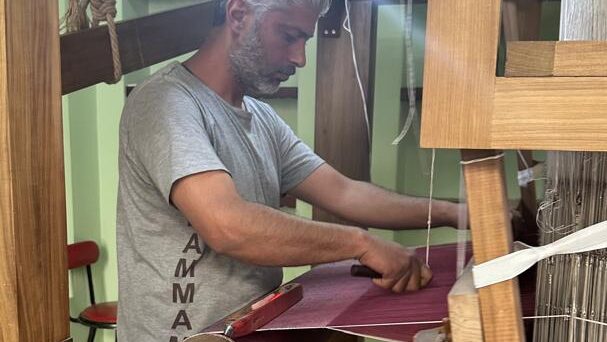
Muhammad Al Shammaa, widely considered to be the last master craftsman of manual brocade weaving in Syria. His journey began at age 11 under the guidance of his father, a textile mechanic. By 12, he was already working on automatic looms, but his true calling was the intricate and physically demanding world of manual weaving.
With over 30 years of dedication, Muhammad has not only preserved the ancient art—he’s also innovated within it. He modified an automatic loom to function as a manual one, a unique feat in Syria. This machine can now weave five colors, compared to the historical maximum of two on manual looms. It’s operated with a pedal system, features a Jacquard mechanism with 800 hooks, and uses over 7,200 threads carefully prepared over 15 days.
What’s Next for Brocade?
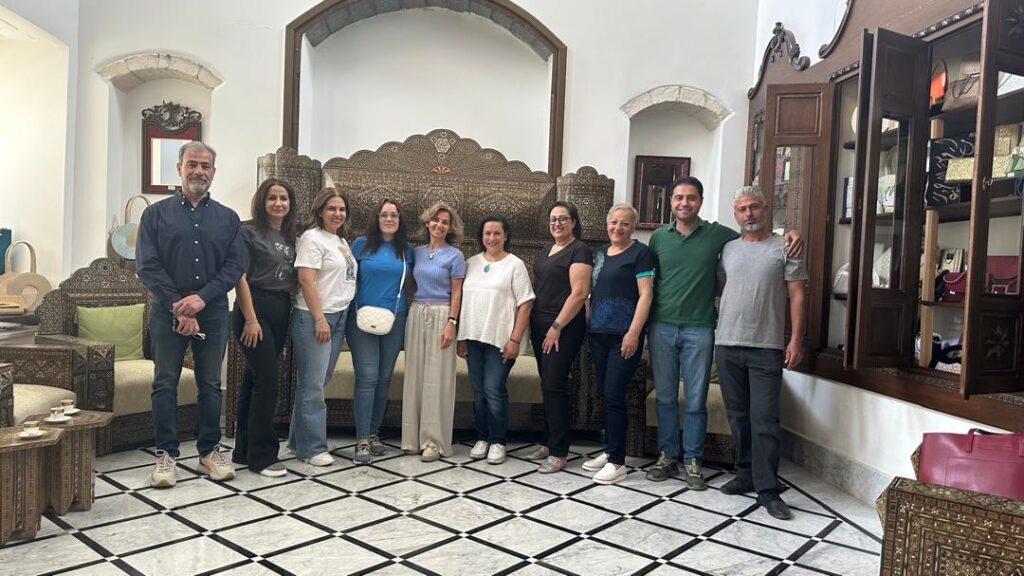
The team at Al Sakhra hope to expand their work in partnership with local silk workshops. If silk production can restart, the cost of materials will go down, and more looms might be restored. They’re also calling for government and private support, especially from the Ministry of Industry, to help market brocade internationally and supply natural silk to artisans. Their ultimate dream? To register Damascene Brocade on UNESCO’s Intangible Heritage List — and to make sure it doesn’t vanish from the world.
How You Can Experience It
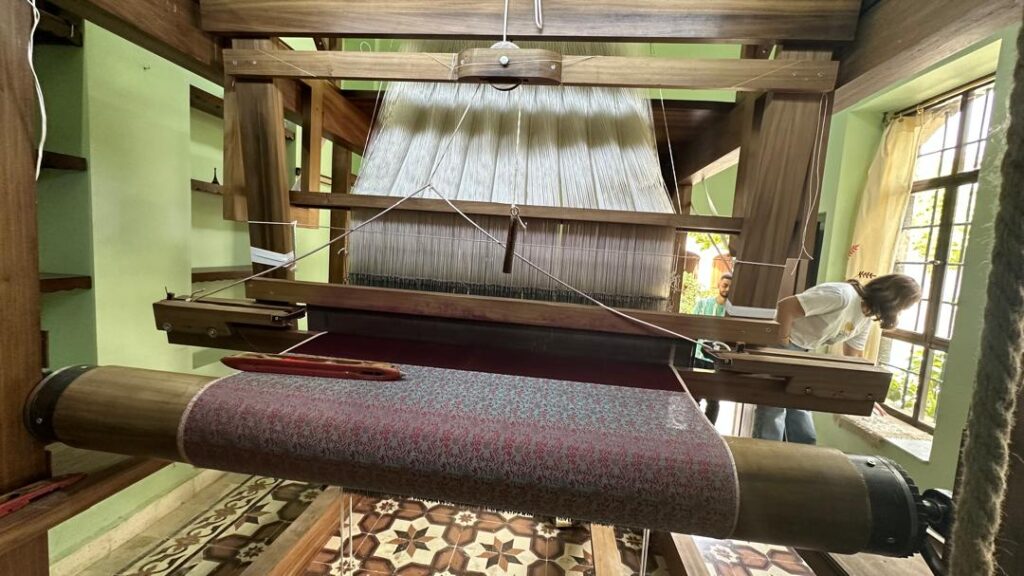
If you’re visiting Damascus, don’t miss a stop at Al Sakhra Association’s house in the Old City. It’s more than a museum — it’s a cultural experience:
- Watch the loom in action.
- Buy handmade brocade items (scarves, cushions, wallets, ties).
- Meet the women and artisans keeping this tradition alive.
Not only are you supporting a local nonprofit — you’re also helping keep one of the world’s most beautiful and historic fabrics alive.
